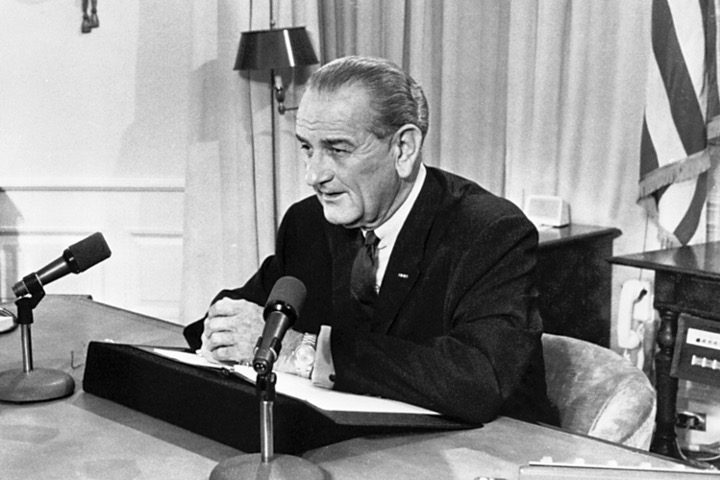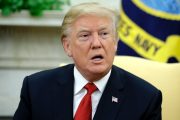
August 28, 2023 marks the 75th anniversary of the 1948 runoff election for the Democratic nomination for the U.S. Senate in Texas. The primary election saw former Texas Governor Coke Stevenson getting 71,460 more votes than the second-place finisher, Congressman Lyndon B. Johnson. Political primaries in Texas then, as now, required a majority vote. Because no candidate in the primary election achieved 50 percent of the vote, the two top candidates, Governor Stevenson and Congressman Johnson, faced each other in a runoff that was held on August 28, 1948. On the night of the election, with almost all of the votes counted, Stevenson was in the lead by the razor-thin margin of 854 votes. That’s when the funny business shifted into high gear.
Much of what happened was documented by the Texas historian J. Evetts Haley in his book A Texan Looks at Lyndon – A Study in Illegitimate Power. While much was done to discredit Haley’s book and other people who questioned the results of the 1948 runoff election, incontrovertible evidence of the steal came on July 31, 1977 when Luis Salas, the election judge in Precinct 13 in Jim Wells County that fateful August day in 1948, confessed publicly to his part in the conspiracy.
A subsequent interview with Salas on August 31, 1984, conducted by Michael L. Gillette, confirmed what Haley had written many years earlier and added additional details. Luis Salas was originally motivated to get involved in politics in part because he felt that he and other Mexican-Americans were victims of discrimination. Salas became an election judge. He explained to Gillette how he got mixed up in what became known as the Ballot Box 13 scandal when political party boss George Parr came to the town of Alice, Texas, and visited with Salas:
Before the 1948 election, George came to Alice [Texas] and told me, “Luís, this time we’re going against Coke Stevenson. We’re going to support Johnson.” I didn’t ask him why, because whoever George told me “we want to support this candidate,” it was all right with me.
For those who might wonder what the word support can mean, Salas gave further details of what happened. There were times when that could mean managing the vote totals in his precinct. As Salas mentioned at a further point in the interview:
Gillette: Okay. Now, let me ask you to go back for just a moment. I want to know how you got the 765 votes. I just want to know the process of getting a turnout for Lyndon Johnson in that election.
Salas: Well, the reason is this, in every election, before I go to every box in our side there and say—that’s what George told me—”Give our candidates 80 per cent of the votes, regardless [if] they vote or not,” and that’s what we did. We give 80 per cent to [Johnson].
Gillette: I see. In other words, 765 people didn’t actually come in, line up, and vote for Johnson.
Salas: Exactly.
Gillette: Okay. Well, how many people do you think did vote for Johnson?
Salas: Well, approximately about four hundred.
Apparently, someone made a math error. The official vote count in Precinct 13 in Jim Wells County on election night was 765 votes for Johnson and 62 for for Stevenson, a whopping 92.5 percent instead of the prescribed 80-percent result. But Johnson still trailed. Within a few days, after amended returns came in, Stevenson’s lead was whittled down to 113 votes.
According to Salas it was decided in a meeting with Luis Salas, Lyndon Johnson, George Parr, and Democratic Party official Ed Lloyd that they would change the “7” in 765 to a “9,” thereby adding 200 votes. It would require stuffing the ballot box with 200 more ballots and adding an additional 200 signatures to the poll list (sign-in sheet with voters’ signatures). It is humorous that Haley in his book A Texan Looks at Lyndon quoted Parr as saying “in his district ‘was as clean an election as had ever been held.’”
There is a controversy about exactly how many ballots were used to stuff Ballot Box 13. Some accounts say 200 ballots were added, and some say a few more, such as 201 or 202. Salas’ statement to Gillette says 202 ballots were added, and he identified the men who helped him:
Salas: Willie Mancha [?] and Ignacio Éscobar. They added the 200 votes. I recall that night there, “Nacho” Éscobar, he was a policeman, and he always was joking. He was a jolly man. After they wrote the 200 votes, Nacho Éscobar says, “Let’s give this poor guy two more votes.” So we add two more votes there, 202. That was [to] let him give him a pilón. You know what pilón means?
Gillette: No.
Salas: Well, pilón means that I give you, for instance, you go to a certain grocery store, especially the children, the owner, after they buy the groceries, they give candy to the kids, and that’s a pilón. So [that’s] what Nacho said.
Coke Stevenson was livid after Ballot Box 13 was stuffed. He made numerous attempts through the courts, but to no avail. One of the methods used to stonewall Stevenson was withholding election documents, such as the poll list. Salas explained: “The federal judge asked me what happened to my list here. [I said], ‘They just stole it out of my car.’ It was not true.”
In the end, it was the Executive Committee of the Texas Democratic Party that decided whether or not to certify the results of the primary. When the vote was tied 28-28, one of the committee members was found hiding in a lavatory. He was rousted out and cast the deciding vote in favor of Johnson. Once again, party politics was a top consideration, even over election integrity. It was a presidential election year and the Democrats’ nominee, Harry Truman, was trailing in the polls. So the dirt was swept under the rug.
Luis Salas made an interesting comment to Michael Gillette regarding U.S. Supreme Court Justice Hugo Black and his role in stopping the investigation:
That’s what surprised me, how [Hugo] Black, the Supreme Court [justice], did a thing that he knew … was wrong, perfectly wrong. That’s what I don’t understand. They’re supposed to be untouchable, superior men to everybody, I guess to everybody. It’s not a fact.
Perhaps Luis Salas could have looked at himself and the numerous other individuals who participated in the fraud and the cover-up. Some were perpetrators. Some were just going along to get along. Some were perhaps uninformed or misinformed. But in Luis Salas’ case, he at least listened to his conscience in the end. When Michael Gillette asked why he waited until 1977 to come forward, Salas explained that when George Parr died in 1975, Salas felt released from his pact. But he added another reason:
I got sick. I pretty near [died]. I was dying of sickness, and I decided to make [known] the true facts of Box 13.
That’s when Luis Salas’ conscience convinced him to repent, something that many others would be wise to emulate.



